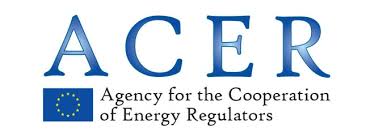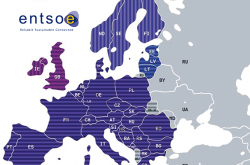Overview
The Agency for the Cooperation of Energy Regulators (ACER) publishes today its ![]() fourth report on Contractual Congestion, a situation in which the level of firm capacity demand exceeds the technical capacity. ACER has identified congestion at 9% of the entry and exist sides of the Interconnection Points (‘IPs’) within the EU Gas Transmission Network.
fourth report on Contractual Congestion, a situation in which the level of firm capacity demand exceeds the technical capacity. ACER has identified congestion at 9% of the entry and exist sides of the Interconnection Points (‘IPs’) within the EU Gas Transmission Network.
This year only 23 interconnection sides out of the 247 IPs analysed were congested, compared to the 41 out of 246 identified in the Agency’s previous report. On the other hand, for another 55 IP sides the Gas Year 2017/18 product was not offered in 2016. In 2015 only 23 IP sides were in a similar condition. This means that it is difficult to assess whether contractual congestion has improved overall in Europe. At the congested points a slight increase of FDA UIOLI was observed, and no application of Oversubscription & Buy Back has been identified.
This Report develops on the list of contractually congested IPs where the Firm Day Ahead Use-It-or-Lose-It (‘FDA UIOLI’) mechanism has to be applied, as of 1 July, in order to guarantee that unused capacity will be brought back to the market. It also reveals to what extent the other Congestion Management Procedures (‘CMP’) have been applied in the European Union and the amount of additional capacity yielded through their use.
The findings of this Report are based on the analysis of data from the Transparency Platform (TP) for 2016 – 2018 of the European Network of Transmission System Operators for Gas (ENTSOG). The study has also used data from the three capacity booking platforms (PRISMA, RBP and GSA), using the auction results for 2016 and March 2017.
How much congestion?
Contractual congestion was identified at 23 IP sides, 17 of which had already been identified as congested in the previous version of the report. For 14 IP sides, contractual congestion was triggered by the non-offer of firm products with the duration of at least one month, whereas the use of auction premia and unsuccessful requests indicated contractual congestion for other 9 IP sides.
Where?
More than half of the contractual congestion occurred at cross-border IPs between Germany and its neighbours and at inland German IP sides. Around 10 IP sides were congested in the South and South South-East Regions.
Has any progress been achieved?
Secondary capacity trades have been concluded only for 7 congested IP sides. Data availability on the secondary market has further increased this year.
What next?
For the 10 congested IP sides where the FDA UIOLI has still not been implemented and the other 3 German IP sides where FDA UIOLI was not duly reported, National Regulatory Authorities (‘NRAs’) should take the relevant measures, which include:
- To require TSOs to implement and apply the FDA UIOLI mechanism or prove that the congested situation is unlikely to reoccur in the following three years.
- To improve TSO data reporting.
ACER’s main recommendations to NRAs, ENTSOG and TSOs
- Improve data reliability: CMP data availability needs to be further improved by ENTSOG/TSOs, by ensuring that auction results with premia and data on all non-available capacity products are uploaded on the ENTSOG’s TP, as required by the CMP Guidelines.
- ENTSOG’s TP should also aim to incorporate information on bundled capacities.
ACER’s recommendation to the European Commission
- Revise the CMP Guidelines to enhance the effectiveness of the measures.
- Offer more flexibility with regards to the application of the FDA UIOLI.
- Review the fourth criterion of the CMP Guidelines with regard to the Firm day-ahead use-it-or-lose-it mechanism (where no firm capacity product with a duration of one month or more has been offered) to align it with the other congestion criteria.
- Define contractual congestion for the day-ahead timeframes between hubs.
- Establish a deadline by which the Agency shall produce congestion reports in the future.
Source: acer.europa.eu
Map
Visited 2735 times, 1 Visit today







